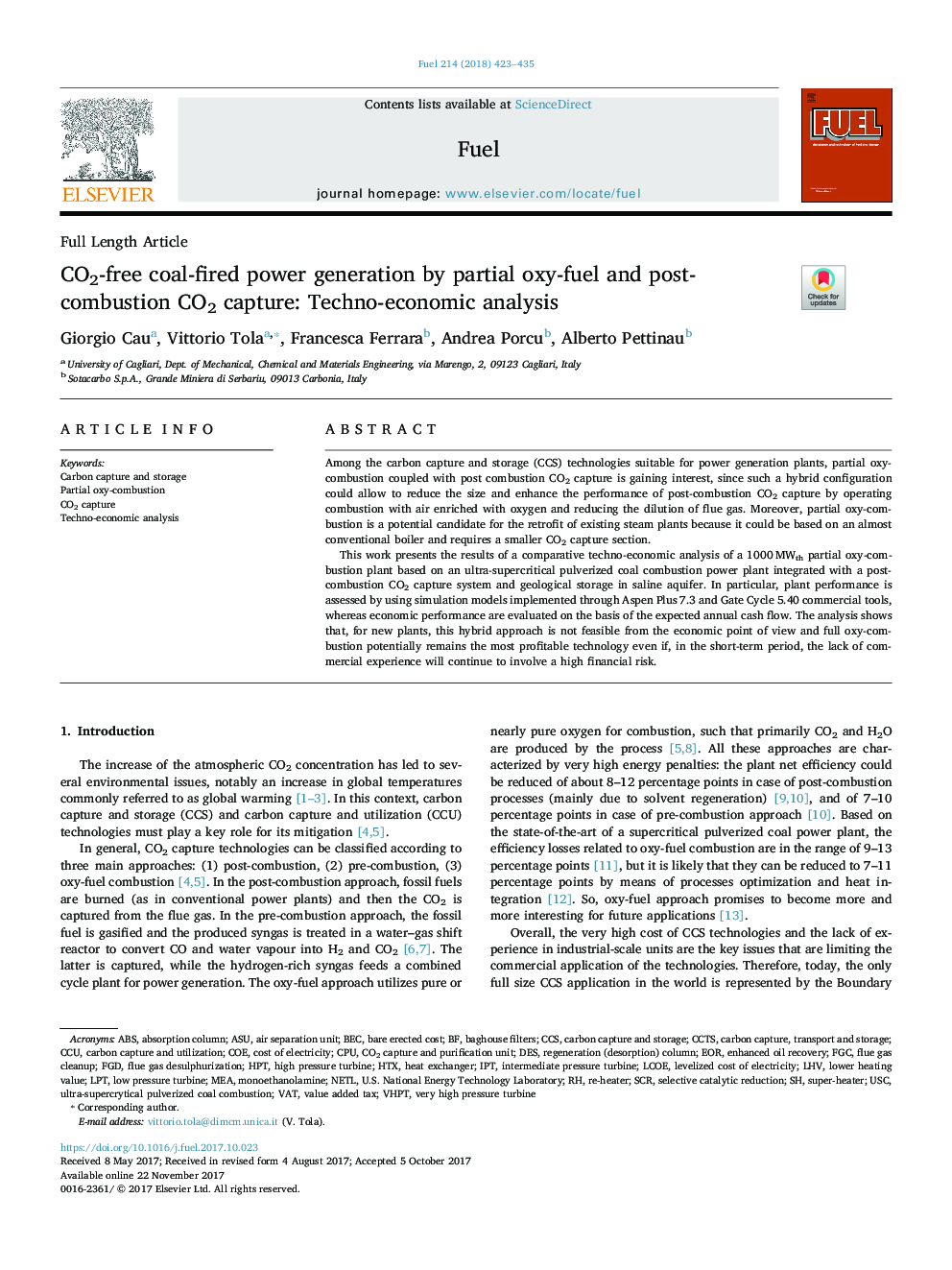| Article ID | Journal | Published Year | Pages | File Type |
|---|---|---|---|---|
| 6632514 | Fuel | 2018 | 13 Pages |
Abstract
This work presents the results of a comparative techno-economic analysis of a 1000â¯MWth partial oxy-combustion plant based on an ultra-supercritical pulverized coal combustion power plant integrated with a post-combustion CO2 capture system and geological storage in saline aquifer. In particular, plant performance is assessed by using simulation models implemented through Aspen Plus 7.3 and Gate Cycle 5.40 commercial tools, whereas economic performance are evaluated on the basis of the expected annual cash flow. The analysis shows that, for new plants, this hybrid approach is not feasible from the economic point of view and full oxy-combustion potentially remains the most profitable technology even if, in the short-term period, the lack of commercial experience will continue to involve a high financial risk.
Keywords
MEANETLLPTFGCCCTsIPTUSChptBECFGDLHVABSCPUASUCCSLCOECCUHTxlower heating valueDESEOREnhanced oil recoveryTechno-economic analysisHigh pressure turbineLow pressure turbineCarbon capture and storageCO2 captureAbsorption columnFlue gas desulphurizationCarbon capture and utilizationVATValue added taxHeat exchangerMonoethanolaminecost of electricityLevelized cost of electricityCoeair separation unitSelective catalytic reductionSCR
Related Topics
Physical Sciences and Engineering
Chemical Engineering
Chemical Engineering (General)
Authors
Giorgio Cau, Vittorio Tola, Francesca Ferrara, Andrea Porcu, Alberto Pettinau,
